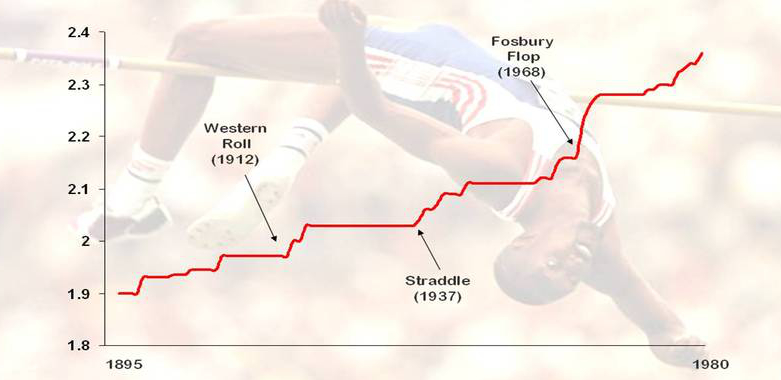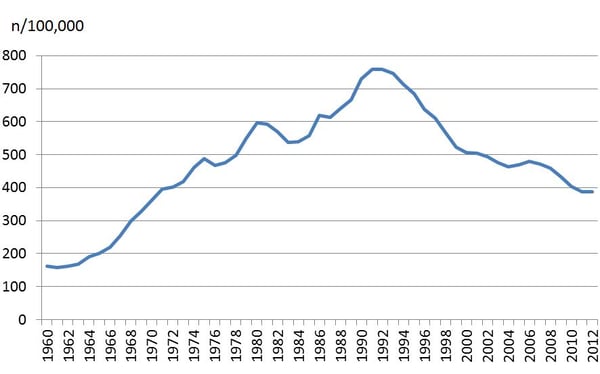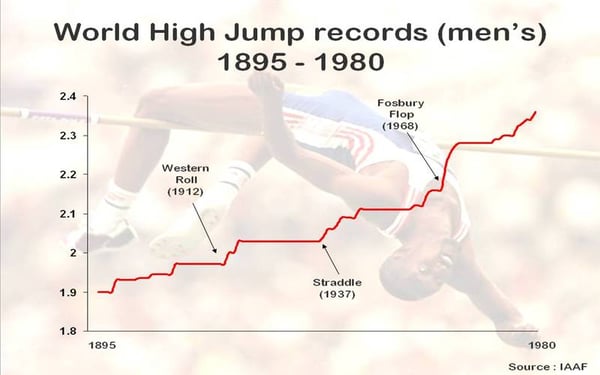Putting the “Performance” into Performance Management
By NRC on April 6, 2015

One of the biggest challenges of performance measurement is acting on data once they have been collected. Even with the best research methods, the implications of data are far from self-evident and implications are needed before action occurs. To understand data, we must put them into historical, regional or organizational context. Looking at data without context is like looking at a graph with no labels.
Data alone are the alphabet of the digital age. With all the necessary letters, data only make sense once you arrange them to create a story that points the way forward. That arrangement requires understanding the connections and direction of the data.
See if you can figure out what this graph represents based on millions of data points, for example:
The title of a graph is the starting point for using performance data. But the title needs supporting paragraphs to describe why the graph undulates as it does. Finding reasons for the dips and turns of a trend is what the coach, administrator, teacher or manager must accomplish to make effective management decisions. These explanations of the data are the hard part of performance management because they require a credible story that argues for action.
Imagine you are the high jump coach examining the men’s high jump records over the last century. The three annotations in the graphic help to explain how a man can improve his high jump. But more needs to be understood so that the coach can recommend ways for her new jumpers to go higher now that everybody uses the Fosbury Flop. What else accounts for the rising heights after the plateau following the new Fosbury technique? Has there been a change in training strategy? Athlete’s diet? Methods of recruiting jumpers? Venues of the competitions? Age of jumpers? Athletic gear? Are there some places where jumpers are excelling and others where jumpers don’t do as well? Are some athletes doing better than expected? Are others doing worse? Answers to these and other questions will help the coach create the call to action.
Similarly, you can see how local government performance changes from year to year or in comparison to other jurisdictions or from one part of the city to another. Then you can start to create a story that resonates about the reasons for data differences or similarities and the moral of that story will be what to do next. Here are some questions to consider for your management improvement based on performance data.
Ask these kinds of questions of the executive or line staff:
- Can you explain why Ward 1 consistently shows better ratings on almost all jurisdiction services than does Ward 3?
- What did we do differently or what happened here or elsewhere that made our results look so much better this year than last year?
- Is there something about our management, resources, procedures, population that explains why more residents here than in comparison jurisdictions think we have less attractive recreation opportunities?
- Is there something we can do about these outcomes?
- Is there something we want to do about these outcomes?
- Are actions in this area a priority and are we willing to set targets for improvements in these metrics?
- What resources are needed to hit the targets we set; who will take the lead to create the scope of work for improvement; when will we have a progress report and new metrics to examine?
As an exercise, apply the relevant questions from above to these data to determine what you would do with this data trend about feelings of safety in your community’s central commercial district.
Popular posts
Sign-up for Updates
You May Also Like
These Related Stories

The Performance Measure Paradox

Time to Rethink Performance Measurement




